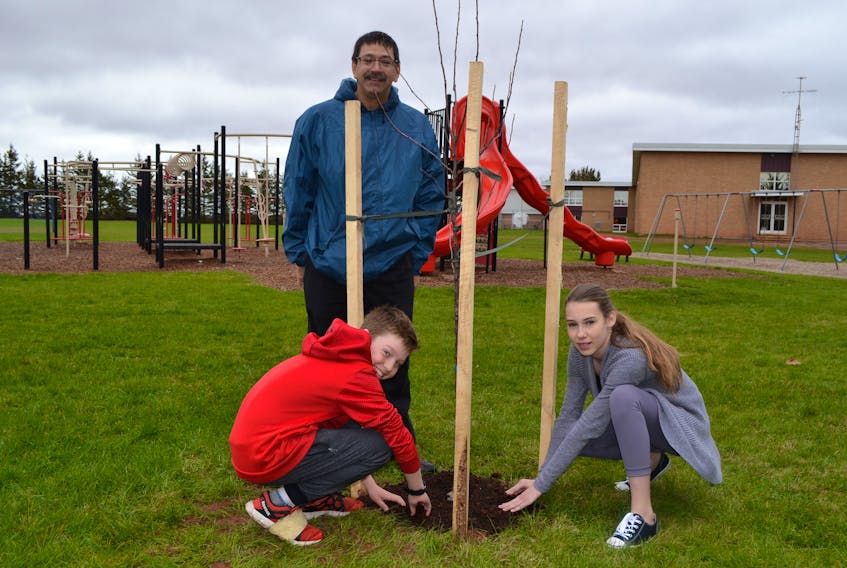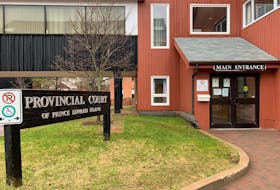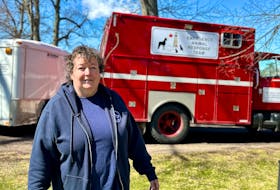BLOOMFIELD, P.E.I. — Nolan Cahill will be moving on to junior high school next year and won’t be around to reap the benefits of his recent labour, but he’s confident his younger sister and other Bloomfield Elementary students will get to enjoy the fresh produce grown on the school’s playground.
Cahill and his fellow Grade 6 students recently assisted John Lane from the Cascumpec Bay Watershed Association (CBWA), and Garth Davey, a horticulturalist with the Town of Alberton, plant what they’re calling a ‘foraging wall’ on the school’s playground.

Fruit trees, blueberry bushes, raspberry canes and rhubarb were planted on the Alberton and Bloomfield Elementary school playgrounds, and a similar project will be carried out on the École Pierre-Chiasson school playground in DeBlois.
The project for the West Prince schools was the brainchild of Lane and Davey, building upon a monarch butterfly-attracting milkweed project they conducted at Alberton Elementary School last year.
This year’s projects are meant to be both educational and a future food source.
“I learned how it is important to water the plants a lot, and how you put the bone meal into the soil,” Cahill said, describing his participation in the project.
He suggested his younger sister will be able to contribute to the project in the future by helping to water the trees and assist in maintaining the foraging wall.
“The last thing we tell the kids – it doesn’t matter what group I talk to, which age group – is everything is connected. What you do affects other things. You cut too many trees, you’re changing the water level; you plant too many, they won’t grow properly.”
-John Lane
Another Bloomfield student, Erica Sweet, said the project was the first time she’d ever planted a tree.
Bloomfield teacher Paul Muise suggested the location of the foraging wall will help provide shelter and a snow break for the school’s playground equipment while also providing fruit for students to enjoy in season.
“I saw it as a way we can enhance our playground,” said Bloomfield principal Andrew Stewart. “We have a great outdoor space; lots of room. We wanted it in an area that was accessible to the kids down the road.
“It’s showing kids the possibility of creating a sustainable lifestyle, and the knowledge of where healthy foods come from.”
CBWA volunteers and staff assisted with the installation of the foraging walls.
“The kids were dying to get their hands dirty,” observed Lane. “They mixed compost and peat moss and bone meal, and they all wanted to get their hands in there in the wheelbarrow and mix things up.”
Prior to the planting, Lane and Davey visited participating classrooms at the three schools to explain the benefits of the project.
“We both thought it would be great, getting the kids involved and understanding where their food comes from a little bit more; understanding how to plant trees and take care of them,” said Lane, adding the project created a positive buzz in the participating classrooms and throughout the schools.
It’s the first time the CBWA has introduced foraging walls, but Lane said the project fits very well with the organization’s educational mandate.
“The last thing we tell the kids – it doesn’t matter what group I talk to, which age group – is everything is connected. What you do affects other things. You cut too many trees, you’re changing the water level; you plant too many, they won’t grow properly.”
The organization conducts an annual beach and sand dunes cleanup with junior high students and involves high school students in other projects, including work in local streams and blazing trails in the Kildare forest.









